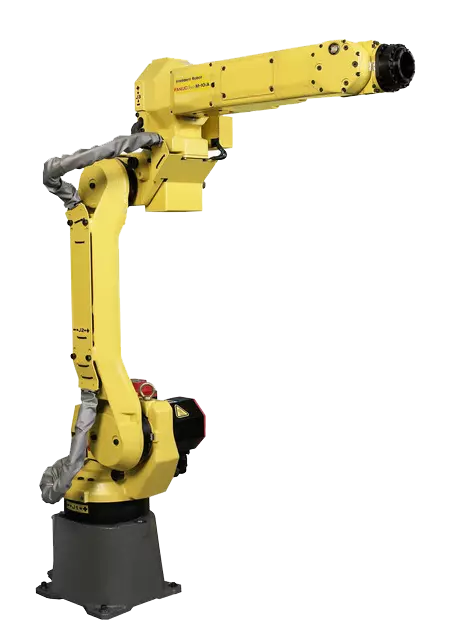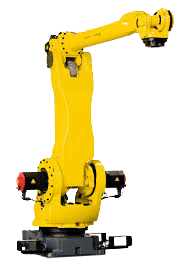Considerations for Selecting the Right Industrial Robot
Automating manufacturing processes with robotics has become common in today’s industrial world. Industrial robots are a proven solution for increasing quality, efficiency, production speed, and worker safety. However, selecting the right robot for your production line may seem overwhelming with numerous manufacturers and robot models to choose from, especially for those new to robotics. Below is a list of factors to consider when purchasing an industrial robot to help simplify the process and to ensure you select the right one for your needs.
Application
The first item to consider when selecting a robot is the application that will be performed by it. This will help to narrow down your options, as robots are generally categorized by application type. For example, if your application is for TIG welding then you will want to look at welding robots like the FANUC Arc Mate 100ic or the Motoman MA1400. If your needing an industrial robot for material handling, then the FANUC M-20ia could be an ideal choice. Many industrial robots are designed to perform multiple applications. The ABB IRB 2600 can be used for plasma welding as well as plasma cutting. If you think your robotic needs may change in the future, then you will want to consider a robot that will be able to adapt to application changes. The versatility of industrial robots is beneficial since they can be redeployed for new applications.Payload
Once you have narrowed down your robot options by application the next item to consider is the robot’s payload. The payload of an industrial robot is the maximum weight it can lift. It is important to know payload doesn’t just refer to the weight of a workpiece, it also refers to the weight of the end of arm tooling. If your robot will need to lift heavy parts, then a heavy-duty robot, like the FANUC M-900ia/600 or the ABB IRB 7600-500, would be best as these have heavier payload capacities.Reach
Another factor to consider is the distance the robot will need to reach during operation. Typically, robots will have two types of reaches, vertical and horizontal. Vertical reach refers to the lowest point it can reach to the highest point obtained by the robot wrist. Horizontal reach is the distance from the center of the robot body it can obtain. Many robot manufacturers offer extended reach models, such as the Motoman MA3100, for those needing extra length. While some robots can be integrated with tracks for an expanded work envelope for extremely large workpieces.Axes
The number of axes a robot has determines its degrees of freedom. This is important to consider because the more degrees of freedom a robot has the more range of motion it can offer. Most industrial robots have 6 axes, as this mimics the range of motion of a human. 6-axis robots are able to twist and turn allowing for an expanded workspace. Having too many axes is not necessarily bad, as this allows for greater flexibility for any future changes.Work Environment
The environment the robot will be operating in should also be taken into account, as not all robots are appropriate for certain conditions. The robot’s IP rating can be very useful in determining if a robot is designed for cleanroom facilities such as a laboratory or for harsh environments. For example, robots with an IP rating of 67, like the FANUC M-710ic, are sealed to protect against high dust or liquid intrusion, allowing for operation in harsh conditions.Robots Done Right is the place to start when it comes to used robots. Contact us if you are interested in buying or selling your used robot.




